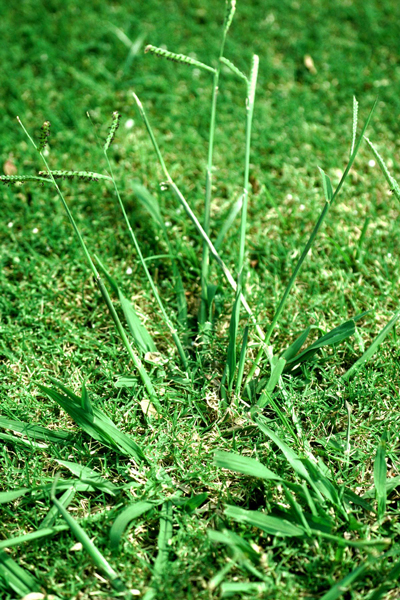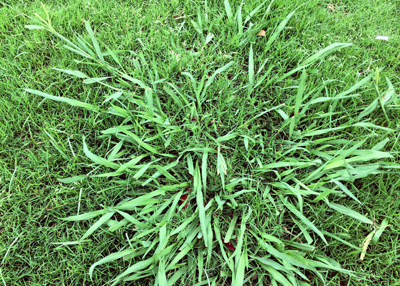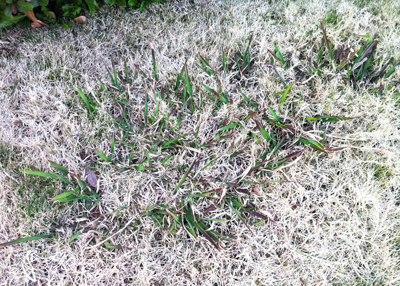Declare War on Dallisgrass

This plant isn’t “Dallas grass.” It’s “dallisgrass,” named in “honor” of T.A. Dallis, a 19th century Georgia farmer who grew it extensively. He was probably a great person otherwise, but this one aspect of his professional career has millions of southern gardeners thinking unkind thoughts about his decision.

The easiest way to help you in preventing or eliminating dallisgrass in your own lawn is to hit the highlights briefly and strongly:
• Dallisgrass is perennial. It comes back from its clumping root system as warm weather returns every spring.

• Every seed of dallisgrass is fertile. They do not require pollination to be viable. That means that you must mow your lawn frequently to keep them from dropping to the ground.
• Normally I wouldn’t recommend a pre-emergent weedkiller for dallisgrass. Those are reserved for annual weeds. But if you have a big crop of dallisgrass in your lawn, a pre-emergent applied during the summer might lessen the germination rate of those obnoxious seeds.
• We no longer have MSMA as a lawn care product. It was the go-to post-emergent means of killing existing dallisgrass within turf (bermuda lawns only), but with it off the market, we now must either spot-treat or hand-dig the dallisgrass clumps to get rid of them.

• Spot treat dallisgrass clumps in any type of lawn by using a glyphosate-only herbicide spray (no other active ingredients). You have to have very precise control of those places where you apply the weedkiller. It kills all grasses, not just dallisgrass.
• For that reason, a 1- or 2-gallon tank sprayer is the best option. You can set the spray nozzle on “medium” and apply the weedkiller carefully just to the weed. Sure, it will leave a spot of dead grass in your lawn, but better to have that than to have a solid lawn of dallisgrass a year or two from now.
• The reason I specified “a glyphosate-only” herbicide with no other active ingredients is because there are products out there containing glyphosate in tandem with long-lasting, soil-active weedkillers. The glyphosate-only products will not contaminate the soil. Your lawngrass will be able to cover the bare spots on its own, or you can dig and move plugs of good turfgrass from elsewhere in your lawn into the bare spaces.
• Finally, a cool trick someone posted on my Facebook page. I don’t have a photo, but I can certainly describe it. Start with a 1-gallon plastic milk jug. Carefully cut the bottom out of the jug. Remove the cap. Place the jug over each clump of dallisgrass and insert the spray nozzle down into the jug. It will ensure precise application without spray drift onto the rest of your lawn.

Dallisgrass is just as ugly in a winter bermuda lawn as it is in the summer. Some people will spot-treat with glyphosate-only weedkiller sprays at this point, but you must be extremely careful to apply it only when the bermuda is totally and completely dormant (no green blades or runners). Otherwise, you’ll kill the bermuda.
